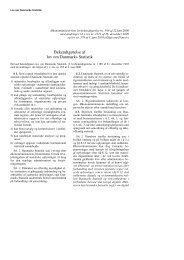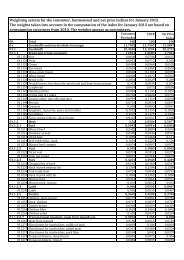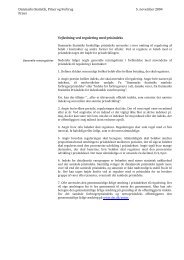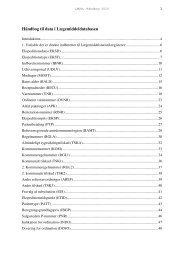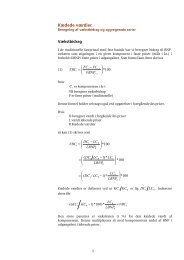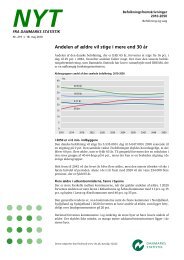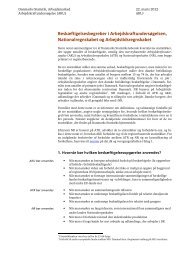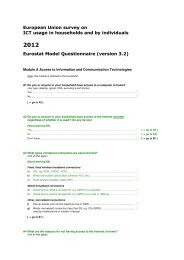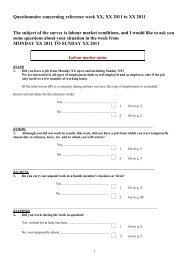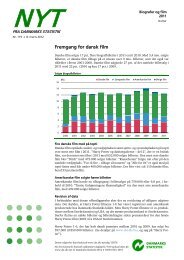Dokumentation og international benchmarking af bygge - Danmarks ...
Dokumentation og international benchmarking af bygge - Danmarks ...
Dokumentation og international benchmarking af bygge - Danmarks ...
- No tags were found...
Create successful ePaper yourself
Turn your PDF publications into a flip-book with our unique Google optimized e-Paper software.
Bilag 3.2.4.Output price index for construction - Analysis of thepotential methodsIntroductionPurpose and aimThree different methods have until now been proposed as methods forcalculating an output price index for construction: The component costmethod, the matched model method and the hedonic method.The aim of this paper is to analyze and compare the three different methodsregarding a number of theoretical and practical conditions.Theoretical considerationIn calculating a price index one must compare like with like.It is from a theoretical point of view a characteristic of all three methodsthat they measure the price development of buildings with constant quality.This means that the potential differences in quality and other structuraldifferences that may exist between constructions build in one periodand constructions build in another period, are not allowed to influencethe price index compiled.The three methods accomplish this in three very different ways.The matched model method limits itself to only comparing the price ofconstructions that are in fact identical from one period to the next. Thishas as a consequence that such an index can only be calculated for types ofconstructions that are to a large extend standardized, ruling out all oneoffkinds of constructions.The component cost method breaks down any construction into elementsuntil it is possible to compare like with like in the elements andthen weights t<strong>og</strong>ether the elementary indices calculated to an overall indexfor the entire construction.The hedonic method solves the problem by isolating the part of the pricethat can be attributed to changes in quality and structure between twoperiods and then calculate the price index on the part of the price left over<strong>af</strong>ter this exercise.Therefore, in theory all three methods are valid for calculating good priceindices.98



